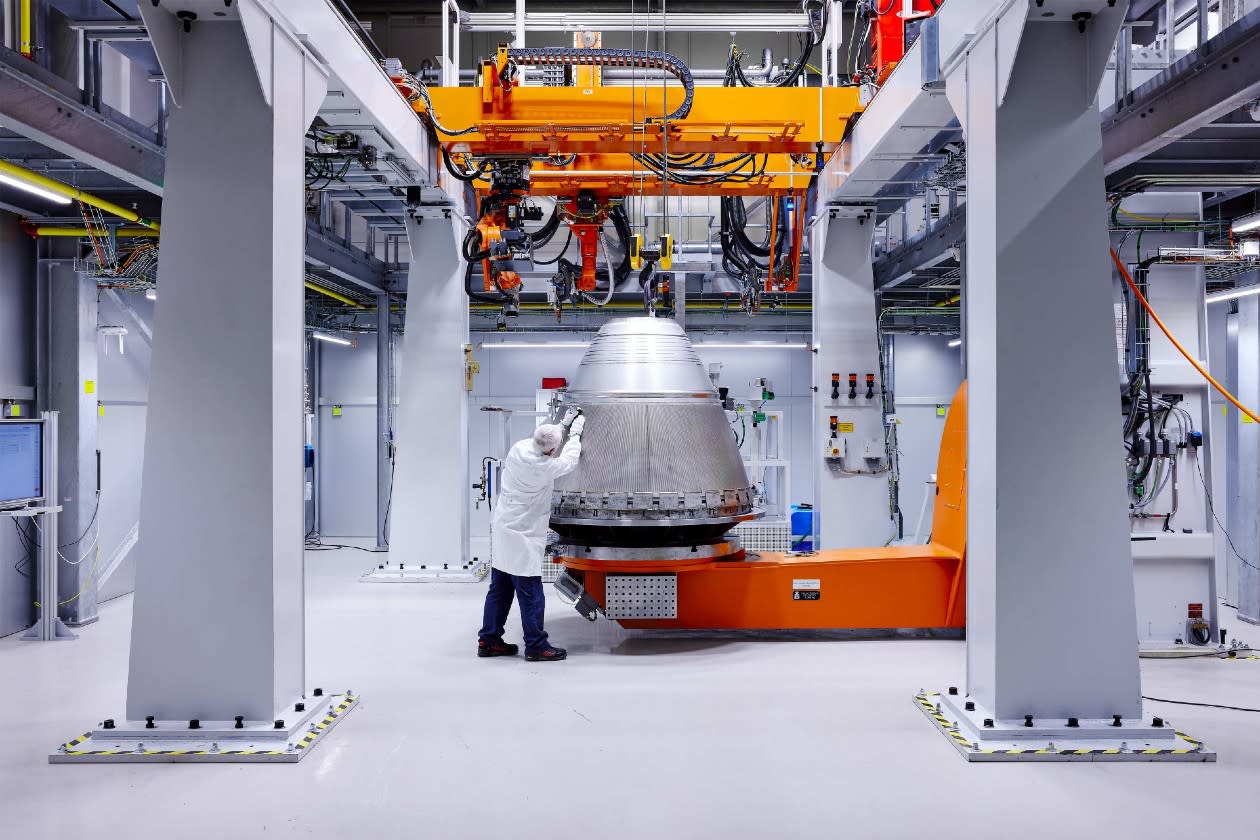Melrose reported underlying revenue growth of 7% in the four months to 31 October.
Revenue growth was driven by the Engines division, which saw a 17% uplift due to a strong aftermarket performance. Revenue in the Structures division only contributed 1% growth, with progress held back by planned exits of non-core work, customer destocking and industry-wide supply chain issues.
Full-year guidance remains unchanged. Underlying operating profit is expected to rise by around 33% to £560mn (at the midpoint and before corporate costs).
In 2025, the group expects to deliver “substantial” free cash flow, and underlying operating profits are “on track” to rise to £700mn.
The shares rose 6.6% in early trading.
Our view
Melrose’s revenue growth continues to be powered by its Engines division, which is helping to offset slow growth in its Structures division. Full-year profit guidance remains on track, with further uplift expected in the new year.
Melrose is a pure-play, high-quality aerospace business. Its Structures division, which deals with building the body and wings of planes, took some shine off performance due to supply-chain issues holding back growth. But the ongoing restructuring programme, contract repricings, and new commercial agreements mean there’s room for improvement in the near-to-medium term.
While the aviation sector can be volatile, we think the current outlook for long-term growth is solid. Melrose's exposure to military as well as commercial customers provides a welcome layer of diversification.
Airlines are also looking to upgrade their ageing fleets after several years of Covid-related underinvestment. That's resulted in record order backlogs to supply components for more than 14,000 Boeing and Airbus aircraft at the least count, stretching all the way out beyond 2030. That gives the group good revenue visibility and means we see the potential for high single-digit revenue growth over the next few years.
The group's Engines segment has Risk and Revenue Sharing Partnerships (RRSPs) with engine makers - 17 out of 19 of which are in the cash-generation phase. The RRSPs require Melrose to contribute an agreed percentage of the total annual engine costs, and in exchange, it receives the same percentage of total annual engine revenue. Considering the long lifetime of an engine model (typically 30+ years), it means Melrose can continue to benefit from ongoing cash flows for decades after engine delivery.
Profitability in the Engines division continues to impress. Last we heard, operating margins were sitting north of 29%, with further improvements expected. While this sounds attractive, it relies on trimming fixed costs, improving productivity, and resolving issues with unprofitable contracts. By no means a straightforward set of tasks.
Some issues are also outside of Melrose’s control. Production trouble at Airbus and quality issues at Boeing have dented timelines, and Melrose previously lowered its 2025 revenue guidance as a result. Supply chain issues are likely to remain a challenge for the industry, so we can’t rule out further setbacks.
Since the demerger of Dowlais, the historic multiples are no longer reflective of Melrose's current operations. The new, streamlined Melrose trades at 14.5 times expected earnings, at the low end when compared to peers. With an improving market backdrop, we see potential for upside. But with plenty of operational challenges for Melrose to navigate, there’s likely to be some volatility over the short term.
Environmental, social and governance (ESG) risk
The aerospace and defence sector is high-risk in terms of ESG. Product governance and business ethics are key risk drivers. Carbon emissions from products and services, data privacy and security and labour relations are also contributors to ESG risk.
According to Sustainalytics, Melrose’s management of ESG risk is strong.
It has board-level oversight of ESG issues and a very strong environmental policy. A part of executive remuneration is explicitly linked to sustainability performance targets, and there is a robust whistleblower policy in place. However, business is cyclical, depending highly on economic changes, which can lead to periodic layoffs.
Melrose key facts
All ratios are sourced from Refinitiv, based on previous day’s closing values. Please remember yields are variable and not a reliable indicator of future income. Keep in mind key figures shouldn’t be looked at on their own – it’s important to understand the big picture.
This article is not advice or a recommendation to buy, sell or hold any investment.No view is given on the present or future value or price of any investment, and investors should form their own view on any proposed investment.This article has not been prepared in accordance with legal requirements designed to promote the independence of investment research and is considered a marketing communication.Non - independent research is not subject to FCA rules prohibiting dealing ahead of research, however HL has put controls in place(including dealing restrictions, physical and information barriers) to manage potential conflicts of interest presented by such dealing.Please see our full non - independent research disclosure for more information.


